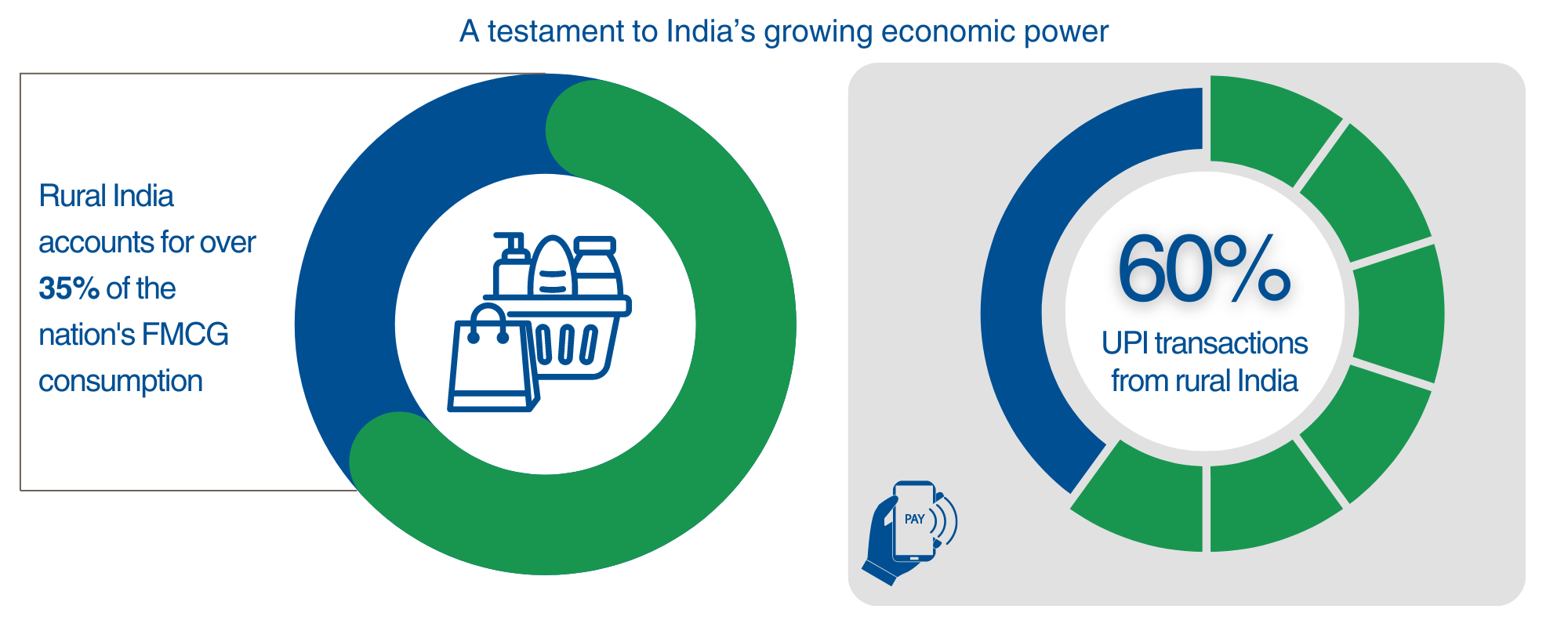The rural economy in India is experiencing significant growth, catalysed by a convergence of significantly enhanced digital reach and strategic infrastructure development. This surge is not only reshaping the economic landscape but is also enhancing the quality of life for millions of people in rural India.
Central to this growth has been expanded access to banking and financial services, with the Public Digital Infrastructure playing a crucial role. The establishment of over 500 million bank accounts, mostly in rural settings, coupled with a notable increase in rural credit – with a 70% year-on-year increase in NBFC credit, has been instrumental in driving economic activities and fostering financial inclusion.
Infrastructure enhancements, particularly in transportation, have bridged critical gaps in markets, healthcare, and education. The construction of over 700,000 kilometres of roads has significantly reduced rural isolation, facilitating smoother commerce and mobility. This has been complemented by a notable shift in economic reliance from agriculture to manufacturing and SMEs. Over 65% of SME manufacturing units are now based in rural areas, underscoring a diversifying economy, and reducing the dependence on traditional farming, which faces productivity challenges.
Moreover, the increased penetration of smartphones and the internet has driven information access in rural regions, offering unprecedented access to information and opportunities. Additionally, the improvement in electricity supply from 10 hours a day to over 20 has spurred consumer behaviour changes and industrial productivity, particularly through increased mechanisation.
Challenges Post-COVID: Slow Recovery and Financial Strain
However, the journey hasn’t been without its bumps – in recent times, there have been reports indicating that the recovery of India’s rural economy post COVID has been slow, with much of the rural population going through a financial struggle due to this slump. On a project undertaken to understand this deeper, what we learned was that while its long-term growth looks sanguine, the impact of the COVID pandemic was significantly exacerbated in the rural economy. This has been characterised by severe challenges, from reverse migration and unemployment to supply chain disruptions and reduced incomes.
Speaking to leading economists from multiple banks and research houses – one interesting find for us was the disparate impact of the pandemic on different income segments. While all segments were negatively impacted, the bottom of the pyramid were largely buoyed by subsidies through the pandemic era. It was the affluent and middle-income that was most vulnerable to the COVID shocks, given their involvement in the economy. Yet resilience is a trait well-ingrained in the rural fabric. It was also this segment that has bounced back the strongest from the pandemic period – further evidenced by the changing consumption dynamics with rural consumers consuming more discretionary items over essentials.
Economic Optimism: Indicators of Rural Prosperity
More economic data underscores this optimism. The latest NSSO survey shows rural monthly per capita expenditure growth outstripping urban rates over the last decade, signalling rising prosperity. Median per capita incomes have doubled, buoyed by a burgeoning middle class and wage uplifts from schemes like MGNREGA.

Recent high-frequency indicators are encouraging, all at 15-30% levels of growth, suggesting that the rural economy is rebounding to pre-COVID levels. Sales of two-wheelers and three-wheelers are robust, and the easing of core inflation is expected to further boost rural demand. This resurgence was highlighted at the recent RBI Monetary Policy Committee meeting, where the anticipation of a boost in private consumption due to rural growth painted a hopeful picture for the future.
As rural sentiments and farmer confidence continue to strengthen, the outlook for India’s rural economy is wholly positive. Looking ahead, sustained growth appears likely, fuelled by moderating inflation and the marked expansion of the non-farm sector. This evolving scenario reflects a significant shift towards a more dynamic and prosperous rural India.